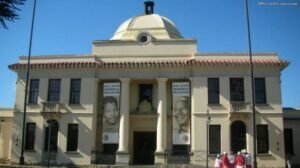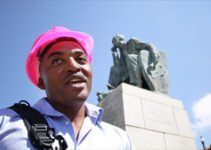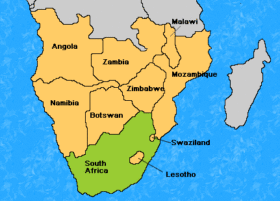South Africa’s rich and complex history is filled with milestones, struggles, and triumphs. Every day holds a piece of the story that has shaped this vibrant nation. Today, on February 11, we turn the pages of the calendar to explore some of the notable events that have occurred on this date.

2000: The Nelson Mandela Museum is opened in Mthatha
The Nelson Mandela Museum comprises three locations: a museum in Mthatha, a visitor’s centre in Mvezo, and a youth centre in Qunu, all located in the Eastern Cape. Nelson Mandela opened it on February 11, 2000, ten years after his release from prison. The museum displays memorabilia gifted to him throughout his life. The visitor’s centre in Mvezo showcases his early childhood, while the Qunu Youth Center provides insights into his school years and young adulthood.
1988: Dutch Reformed Church in Africa talks with the ANC
Dr. Nico Smith led a delegation of the Dutch Reformed Church in Africa to speak with the African National Congress. The DRC started its mission work under black South Africans in 1824. The DRMC was formed in 1881 for non-white members, and the DRCA was founded for black people in 1951.
1982: Mass protest against the circumstances of Neil Aggett’s death
A call for a thirty-minute work stoppage in protest of the death of Dr Neil Aggett, who allegedly committed suicide while in police detention, was supported by virtually all independent black unions, with more than 50,000 workers taking part in the protest. This was in response to a call for a nationwide work stoppage from the mostly nonwhite African Food and Canning Workers Union, where the young physician had worked.
Outrage at the circumstances of his death cut across racial lines and prompted White opposition politicians, lawyers, academics and church leaders to lead demands for the end of prolonged solitary detention without trial because of the intolerable conditions it created.
1975: Van Wyk de Vries Commission submits its report to Parliament
In 1972, a report was presented to Parliament recommending that the Minister of Education be authorized to declare any inter-university or student organization involved in political activities undesirable. The commission’s primary target was the National Union of South African Students (NUSAS).
1966: Forced Removals commence from District Six
District Six, or Kanaladorp, was declared a ‘White Area’ under the 1950 Group Areas Act of the Apartheid government. Prior to this, residential areas were more frequently segregated based on class than race. However, the Group Areas Act aimed to racialize and segregate spaces. Despite widespread protest, District Six was redeveloped for white occupation, forcing non-white residents to move out over 15 years.
1946: Smuts refuses call to postpone Anti
60 Indians urged Prime Minister Smuts to postpone the Asiatic Land Tenure and Indian Representations Bill, but he declined and proceeded with legislation.
1699: Simon van der Stel is succeeded by his eldest son
Simon van der Stel was succeeded by his son Willem Adriaan van der Stel as Governor of Cape. Simon retired and settled on his estate Constantia where he continued to develop it until his death in 1712. Adriaan was also a farmer and planted vineyards on his farm “Vergelegen” which led to a petition being sent to the Council of XVII against him by a group of influential Cape farmers.



